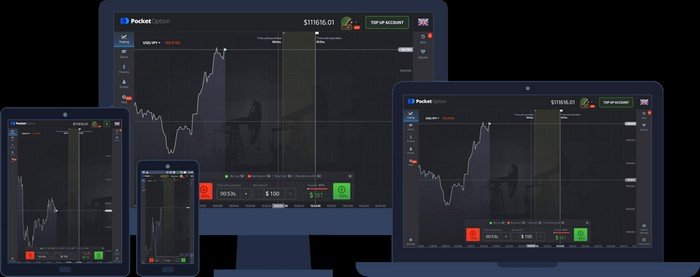
Understanding Pocket Option Markets: A Comprehensive Guide
Engaging with Pocket Option Markets рынки Pocket Option can be a transformative experience for traders. Pocket Option has emerged as a formidable player in the binary options trading market, attracting a diverse range of investors seeking opportunities to maximize their returns. This article delves into the intricacies of Pocket Option markets, offering insights into how to navigate them proficiently and capitalize on their unique features.
What Are Pocket Option Markets?
Pocket Option markets are platforms where traders can engage in binary options trading. This involves predicting the directional movement of an asset’s price within a specified time frame. If a trader’s prediction is correct, they earn a profit, while an incorrect prediction results in a loss. The appeal of these markets lies in their accessibility, user-friendly interface, and extensive educational resources, making them suitable for both novice and experienced traders.
Types of Assets Available
In Pocket Option markets, traders can choose from a wide variety of assets, including:
- Forex pairs (such as EUR/USD and GBP/JPY)
- Stocks (like Apple, Google, and Tesla)
- Cryptocurrencies (including Bitcoin, Ethereum, and Ripple)
- Commodities (such as gold, silver, and oil)
This diverse selection allows traders to formulate a well-rounded trading strategy that reflects their risk tolerance and market understanding.
Getting Started with Pocket Option
To begin trading, users must create an account on the Pocket Option platform. This process is straightforward and involves providing some personal information and verifying the account. After registration, traders can access a demo account that allows them to practice their strategies without risking real money. This feature is particularly beneficial for beginners, as it helps them gain confidence and understand market dynamics.
Strategies for Successful Trading
Success in Pocket Option markets often hinges on adopting effective trading strategies. Some popular strategies include:
1. Trend Following
This strategy involves analyzing market trends and making trades based on the direction of the trend. Traders using this approach look for momentum and prefer opening trades in the direction of the prevailing trend.
2. Breakout Trading
Breakout traders seek to capitalize on price movements that occur after an asset breaks through a significant support or resistance level. A successful breakout often leads to substantial price shifts, presenting lucrative trading opportunities.
3. News-Based Trading
News can significantly impact asset prices. Traders often monitor economic indicators, earnings reports, and geopolitical events to make informed trading decisions. News-based trading requires a keen understanding of market reactions to various events.

Utilizing Pocket Option Tools
Pocket Option provides a suite of tools to aid traders in their decision-making processes. Among these tools are:
- Trading Signals: These alerts notify traders of potential trading opportunities based on market analysis.
- Technical Indicators: Users can leverage various indicators, such as moving averages and RSI, to analyze price movements.
- Risk Management Tools: The platform offers tools to set up stop-loss and take-profit orders, helping traders manage their risk effectively.
Familiarizing oneself with these tools can enhance trading efficiency and contribute to better outcomes in the Pocket Option markets.
Risk Management in Pocket Option Markets
Risk management is a crucial aspect of trading in any market, and Pocket Option is no exception. Here are some risk management strategies to consider:
1. Setting Limits
Establishing a maximum loss limit for each trading session can prevent significant losses. It is essential to stick to this limit regardless of market conditions.
2. Diversification
Traders should consider diversifying their portfolios by investing in various asset classes. This approach can mitigate risks associated with market volatility.
3. Regular Review
Regularly reviewing trades and strategies helps traders understand what works and what doesn’t. Continuous learning and adaptation are vital for long-term success.
Combining Fundamental and Technical Analysis
Successful traders often blend fundamental and technical analysis when making trading decisions. Fundamental analysis involves examining external factors, such as economic indicators and market news, while technical analysis focuses on historical price data and patterns.
Utilizing both approaches enables traders to develop a more comprehensive understanding of market dynamics, leading to more informed trading decisions.
Engaging with the Trading Community
Joining online communities or forums dedicated to Pocket Option can provide valuable insights from experienced traders. Engaging with others allows individuals to exchange strategies, learn from each other’s experiences, and stay updated on market trends.
Conclusion
Pocket Option markets offer an exciting avenue for traders looking to capitalize on various asset classes. By understanding the mechanics of trading, employing effective strategies, and managing risks wisely, individuals can enhance their trading experiences. Whether a beginner or a seasoned trader, the key to success lies in continuous learning, practicing sound risk management, and utilizing the plethora of resources available. As the markets evolve, adapting to new trends and strategies will be crucial for sustained success in the dynamic world of Pocket Option trading.